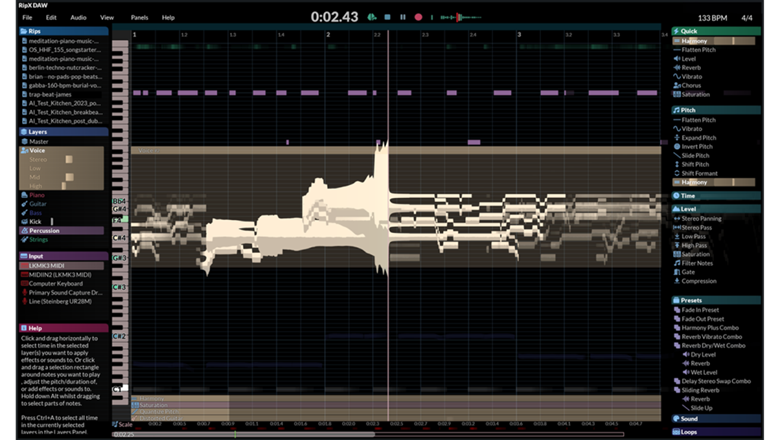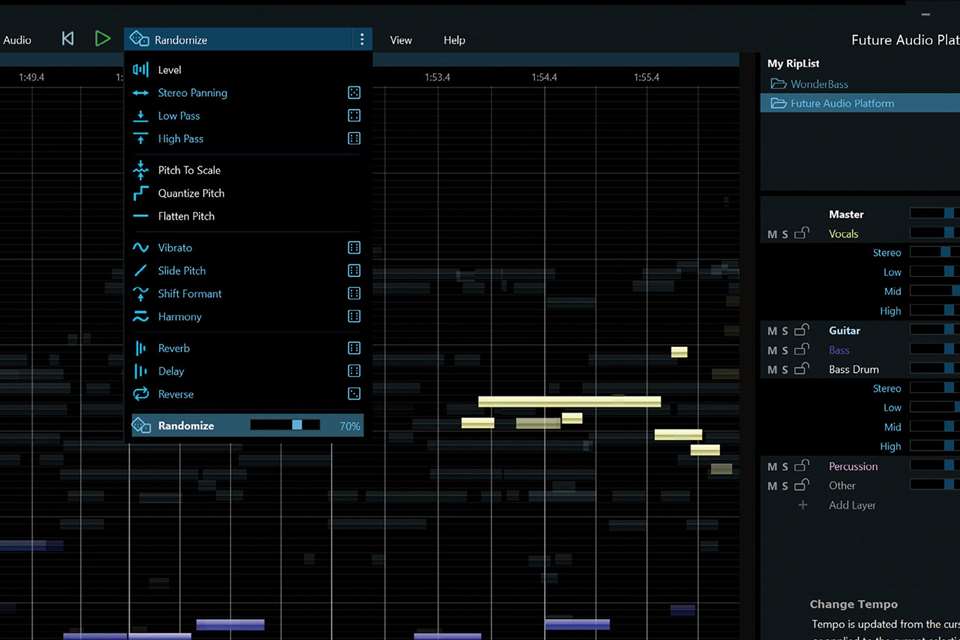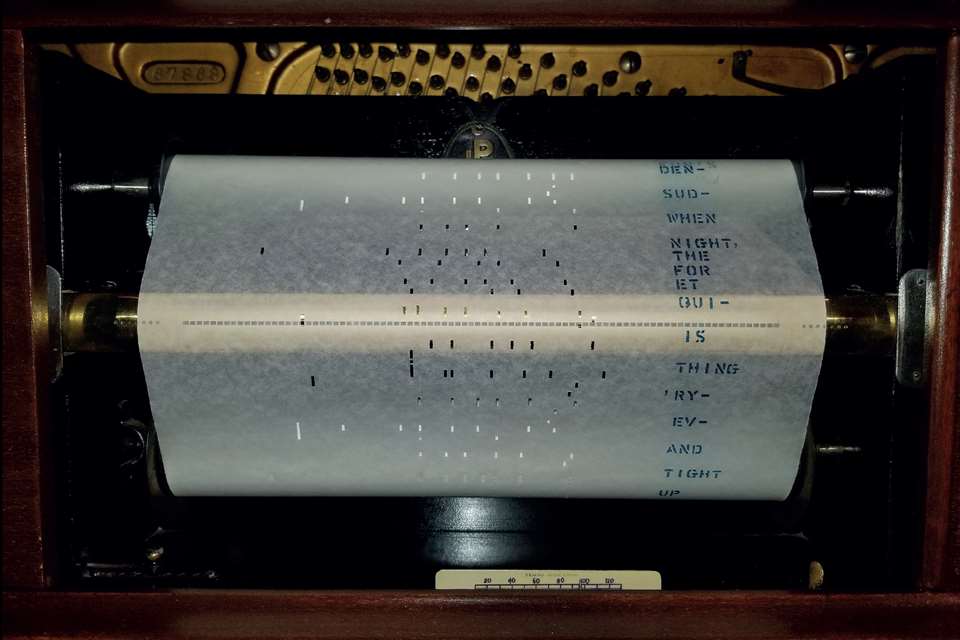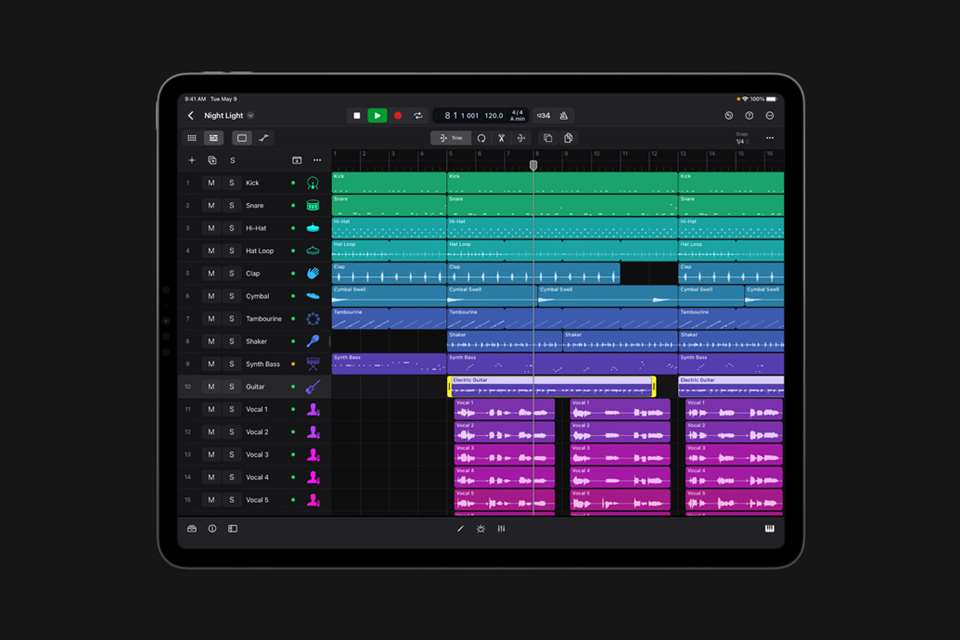Tech reviews: RipX DAW and RipX DAW PRO
David Guinane
Thursday, February 1, 2024
David Guinane tests out the latest iteration of Hit’n’Mix’s software for separating then manipulating audio stems.

Hit’ n’ Mix
In August 2021, I reviewed audio company Hit’n’Mix’s RipX: Future Audio Platform for Music Teacher. I was positive about the product, yet perhaps an even more telling endorsement is that I continue to use the software to this day. Two years on, Hit’n’Mix has released RipX DAW and RipX PRO, replacing the previous incarnations of DeepCreate, RipX DeepRemix and RipX DeepAudio. The branding is clearer now, but still not perfect. I jumped at the chance to look at the latest version of the product and the new features offered.
The core purpose of the software remains the same: a tool for separating audio into individual parts (often called stems). After that, RipX gives you a number of tools to change, manipulate and work with the separated audio. Imagine taking any digital music file and splitting it into bass, drums, vocals, keyboards and so on, and you have stem separation.
I adore this technology and have created countless resources with it. Having tried all the major services offering stem separation, both free and paid, RipX is by far the best software I have used. In my testing, the quality of the separation (not perfect, but improving with every update) is much higher than its competitors. In addition, the interface is clear and easy to understand. You will benefit from watching a few YouTube tutorials, but this is true of any music production software.
Transcription tool
I use this software in my personal and professional music-making in several ways. As a transcription tool, I use it to slow down and isolate lines for transcription. The separated stems are laid out as a MIDI-like grid, allowing you to focus on individual notes and see exactly where they fall in relation to a grid. Since my last review, RipX’s technology has improved and now includes chord recognition alongside individual melodic lines.
Removing the vocals allows you to create backing-tracks or isolate parts for use in performance or rehearsal, and exporting the stems for use in another DAW allows you to create multi-track projects for students to study and play around with. There are several tools for DJs, remixers and producers.
I go into these possibilities in more detail in my previous review. I will be the first to admit that I use RipX almost exclusively for creating backing-tracks, isolating and slowing down tracks for transcription, and creating stems as resources for students. Looking through my projects, to give an example, the last thing I created in RipX was a multi-track of ‘Chameleon’ by Herbie Hancock. I asked students to recreate a section of the piece in GarageBand and gave them the stems to assist in this process.
For this incarnation, I wanted to dive further into the creative opportunities offered by the software. When you select a separated track, there are several options. Alongside everything you would expect to see in a DAW – filters, echo, reverbs, gates, and so on – there are some more ‘creative’ features. You can instantly generate vocal harmonies from solo lines, flatten the pitch, adjust the timing of tracks, edit the vibrato, and much more. These are tools for remixing, extracting a line and adding it to a new project, and making tiny adjustments to rhythm and pitch to suit the new context. It all works brilliantly and creates really interesting music from your source. One feature I tested for the first time was playing one part through the instrument of another; that is, taking the vocal line from a track and playing it through the exact bass sound of the same track. With this tool, you can create instrumental versions of vocal pieces or be more creative and completely re-contextualise different elements of a track.
Power of branding
Adding ‘DAW’ to the product name feels like a deliberate move by Hit’n’Mix to convince consumers that this latest version is more than a transcription tool with some fun, built-in remix effects. It is now firmly positioned as a potential replacement for your current digital audio workstation. There are loops, which, of course, can be edited and tampered with in the same ways as the stems the software creates for you. You can record and use MIDI much as you would with an alternative DAW. It still doesn’t feel like a DAW, but I don’t think that’s a bad thing. RipX encourages you to try new things with its innovative layout and graphic display of individual tracks in the centre of the screen.
AI is at the forefront of all the marketing around this latest version. It claims to allow creators to take AI-generated tracks and ‘humanise’ them with its suite of effects and tools. It does not, however, generate music using AI. Clicking the AI icon (a brain split in half) takes you to a website that contains links to the two most popular AI music generators. This is clunky. You have to create the music in a third-party service, download it and import it just as you would with any other audio. I would question the real-life experience of the advertised level of integration. After importing, you can then use RipX’s previously mentioned tools to make the AI-created music sound, well, better.
The use of this feature will depend on the extent to which AI-generated music forms part of your music-making. There is potential to create some interesting projects. Asking students to create music with AI – using a specific prompt, comparing results, and then using RipX to remix and improve the piece – would give them the opportunity to demonstrate musicianship in a unique way. However, you can also do this in other DAWs, as the process is the same regardless of whether you use RipX or a competitor to edit the audio.
RipX DAW comes in two versions: RipX DAW, and RipX DAW PRO. So, what’s the difference? Essentially, you get better audio clean-up and separation when you pay more. You get a much finer degree of control over individual harmonics and sounds, and there are a few neat features such as the ability to draw in vocal embellishments with pinpoint accuracy. The choice of which one to buy depends on your goals: if you are using this as a creative tool and want the best quality audio, go PRO; if you are using RipX in a more functional manner (creating backing-tracks, transcription, and so on), then you are less likely to benefit from the more expensive version.
Transferable skills
I’m split (pardon the pun) on the new version of RipX. It remains my go-to tool for all things audio separation and continues to provide outstanding results. However, the rebranding and marketing around this version suggested a much more fundamental change to the software than I experienced. It feels more iterative than revolutionary. This is by no means a bad thing, but I had wondered if this would be the update that pushed RipX DAW from being a useful tool to becoming the primary software that I (and maybe even my students) use to create music. Ultimately, it remains a tool (albeit a useful one). I still feel more comfortable creating stems in RipX and working with them in other DAWs (though I have fallen in love with the ‘create vocal harmonies’ effect). For my students, I think RipX remains too esoteric to teach formally. I want to teach students DAW skills that are transferable, and although there will be projects for which they could arguably be more creative and musical in RipX than another DAW (any remixing or sampling project, for instance), they may come unstuck when they encounter the more industry-standard interfaces of DAWs.
Overall, the DAW branding hasn’t convinced me to change the way that I work with RipX. Yet it remains an outstanding stem separation tool and a creative, fun playground for remixing music and for working with samples. I will continue to recommend it strongly.
RipX DAW: £99
RipX DAW PRO: £199
hitnmix.com








